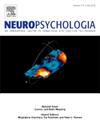灵长类动物前额叶皮层任务映射研究。
IF 2
3区 心理学
Q3 BEHAVIORAL SCIENCES
引用次数: 0
摘要
侧前额叶皮层(LPFC)灵活地支持多种认知功能,包括工作记忆,决策和抑制控制。与感觉皮层不同,LPFC神经元表现出混合选择性,动态调整其调谐以编码不同领域的任务相关信息。这些上下文相关的响应挑战了传统的功能映射方法。在这篇综述中,我们提出将刺激映射技术应用于LPFC的“任务映射”。我们强调了LPFC的结构和功能特性所带来的主要挑战,包括大的时空感受野、动态调谐和综合连接。为了解决这些挑战,我们引入了地形相似性分析(TSA),这是一种受表征相似性分析启发的方法。最近在猕猴中使用TSA的研究结果揭示了LPFC活动的特定任务但稳定的地形,为该区域如何组织不同的认知功能提供了见解。这些发现鼓励在更丰富的任务空间中进一步探索地形。通过将TSA扩展到人类的高场fMRI,未来的研究可能会揭示LPFC功能背后的认知维度,促进对灵活认知的更深入理解。本文章由计算机程序翻译,如有差异,请以英文原文为准。
Toward task mapping of primate prefrontal cortex
The lateral prefrontal cortex (LPFC) flexibly supports diverse cognitive functions, including working memory, decision making, and inhibitory control. Unlike neurons in sensory cortices, LPFC neurons exhibit adaptive coding, dynamically changing their tuning to encode task-relevant information across domains. These context-dependent responses challenge traditional approaches to functional mapping. In this review, we propose adapting stimulus mapping techniques for ’task mapping’ of LPFC. We highlight key challenges in this endeavour, arising from the structural and functional properties of LPFC, including large spatiotemporal receptive fields, dynamic tuning, and integrative connectivity. To address these challenges, we introduce topographic similarity analysis (TSA), an approach inspired by representational similarity analysis (RSA). We discuss the potential of TSA for detecting reorganization of functional topographies with learning and changing task demands, with empirical work applying TSA to macaque cell recordings underway. This work motivates further exploration of topographies across a richer task space. By extending TSA to high-field fMRI in humans, future research may uncover cognitive dimensions underlying LPFC function, fostering a deeper understanding of flexible cognition.
求助全文
通过发布文献求助,成功后即可免费获取论文全文。
去求助
来源期刊

Neuropsychologia
医学-行为科学
CiteScore
5.10
自引率
3.80%
发文量
228
审稿时长
4 months
期刊介绍:
Neuropsychologia is an international interdisciplinary journal devoted to experimental and theoretical contributions that advance understanding of human cognition and behavior from a neuroscience perspective. The journal will consider for publication studies that link brain function with cognitive processes, including attention and awareness, action and motor control, executive functions and cognitive control, memory, language, and emotion and social cognition.
 求助内容:
求助内容: 应助结果提醒方式:
应助结果提醒方式:


